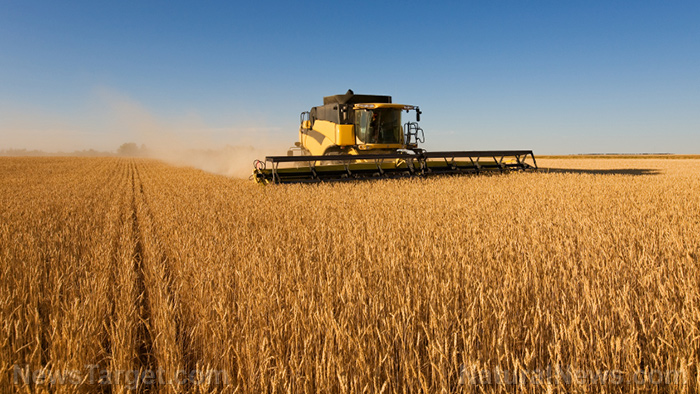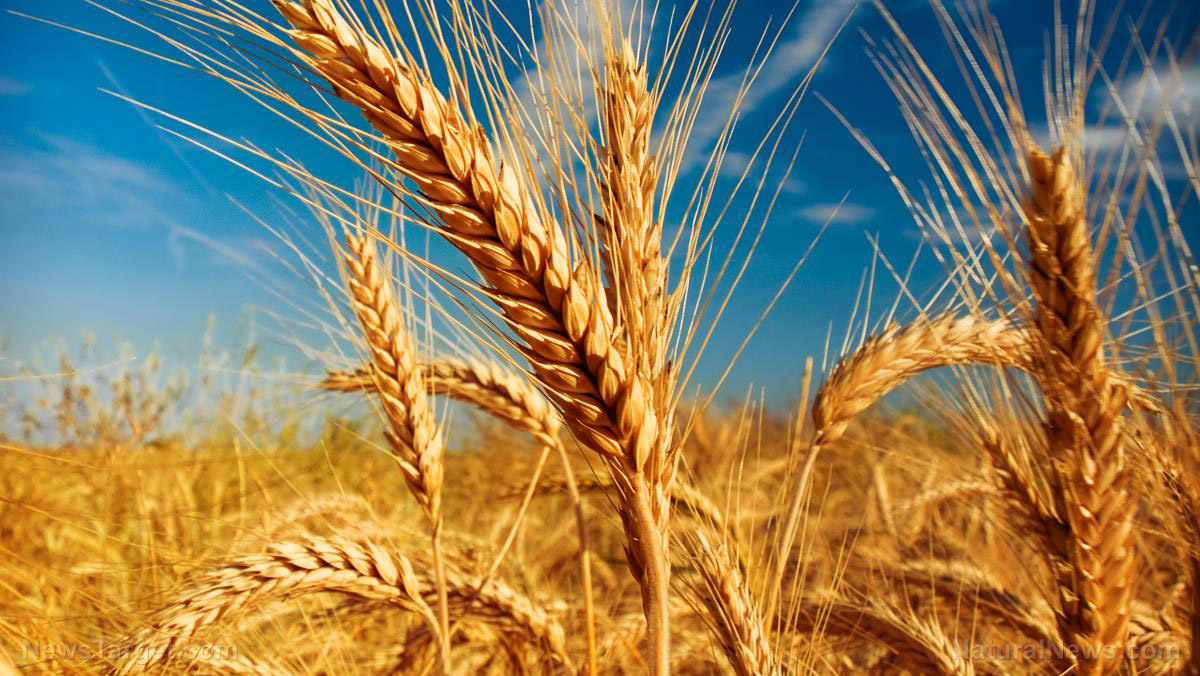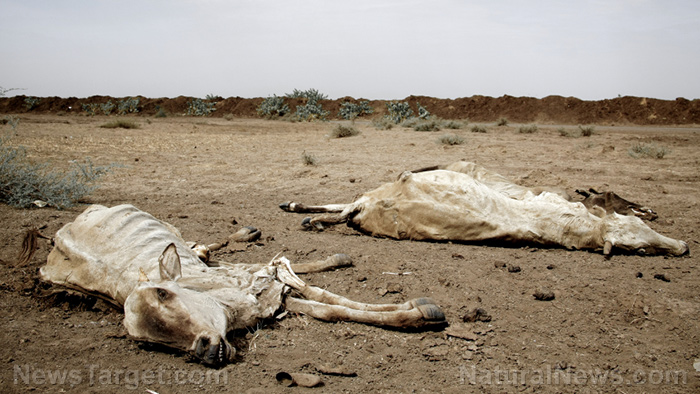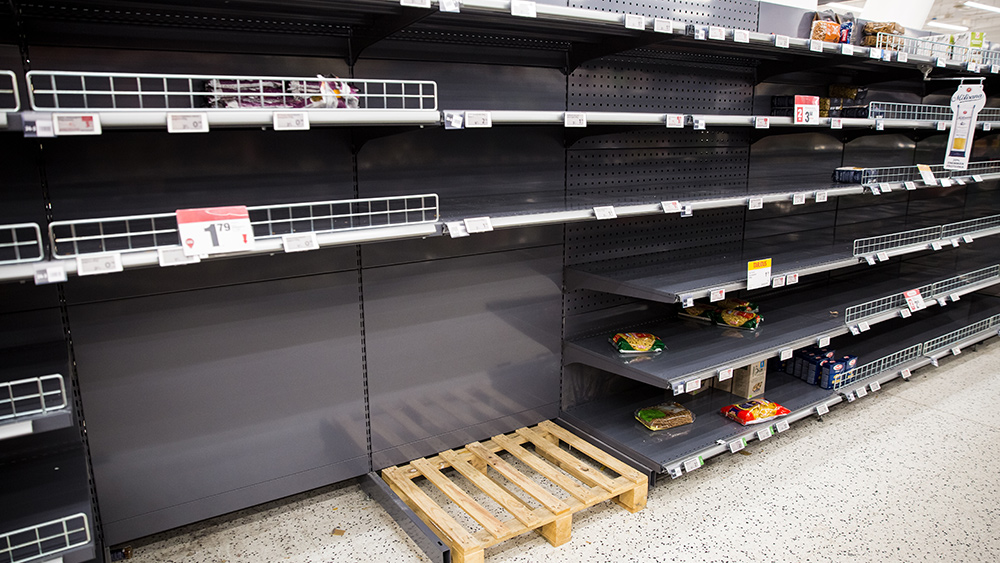5 Texas counties designated natural disaster areas as drought continues to ravage the state
06/29/2022 / By Mary Villareal
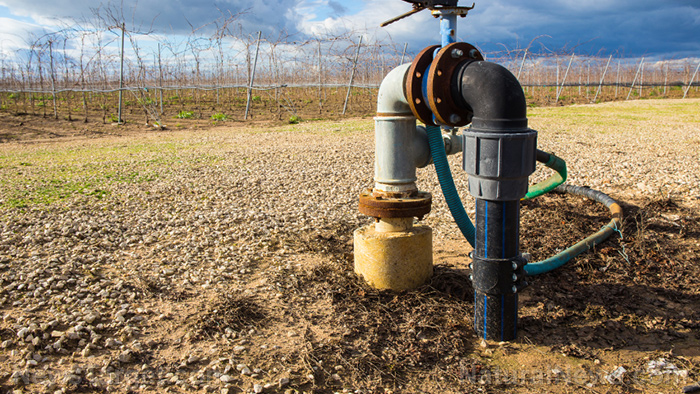
Five counties in Texas were designated as natural disaster areas as drought ravaged the Lone Star State.
According to the U.S. Drought Monitor, five counties – Austin, Colorado, Harris, Lavaca and Fort Bend – were designated as natural disaster areas. The counties suffered from severe to exceptional drought, it added.
The Fort Boone Herald said Fort Bend County only received less than half an inch of rain in June, down from the usual five inches of rain at this time of year. Boone Holladay, agricultural agent at the Texas AgriLife Extension Service, said rainfall will be “well below normal” with temperatures way above normal. (Related: California farmers shaking almonds off trees to save drought-stricken orchards.)
Fort Bend County received 9.5 inches of rain in June 2021 – yielding plenty of corn, sorghum and cotton harvests. But the lack of rain this year impacted the quality of sorghum, Holladay remarked.
John Few, another agricultural agent and Holladay’s colleague at Texas AgriLife, remarked that the corn harvest for this year will not be of the highest quality.
“Usually, you’ll have a full ear of corn 98 percent of the time. If you open up an ear of corn now, it’s maybe three-quarters full but the tip is not making kernels,” he told the Herald.
Both Holladay and Few agreed that with the lower yield and quality of crops harvested, farmers will most definitely request insurance assistance from the federal government.
USDA extends emergency credit to help tide farmers over
Given the situation at the Texas counties, the U.S. Department of Agriculture‘s (USDA) Farm Service Agency (FSA) extended the much-needed emergency credit to producers recovering from natural disasters through emergency loans.
The proceeds of these loans can then be used to meet recovery needs, such as the replacement of essential items like equipment or livestock, reorganization of a farming operation or refinancing of certain debts.
The FSA will review the loans based on the extent of the losses, available security and repayment ability.
Farmers living in the five counties deemed as natural disaster areas because of the drought are eligible to apply for the emergency credit. Other contiguous counties are also eligible to apply – including the Brazoria, Chambers, DeWitt, Fayette, Galveston, Gonzales, Harris, Jackson, Liberty, Montgomery, Victoria, Waller, Washington and Wharton counties.
Few pointed out that aside from the FSA emergency loans, market forces could also be of assistance to farmers – especially those planting corn.
“The high price for corn production would lead to prices increasing, which could lead to some profit,” said the agriculture agent. Few noted that corn prices are expected to reach as high as $6 per bushel.
Holladay, meanwhile, said that Fort Bend County being declared a drought disaster zone meant farmers will have less hassle seeking insurance assistance on their crops.
Watch the video below for more information about the effects of drought on crops and livestock.
This video is from the Grand Solar Minimum Solutions channel on Brighteon.com.
More related stories:
Drought threatens US wheat harvest, deepening global supply challenges.
Drought-stricken Texas finally gets some rain, but it may not be enough to save crops and cattle.
USDA says “megadrought” threatens American corn, soybean yields, worsening food shortages.
Sources include:
Submit a correction >>
Tagged Under:
agriculture, chaos, climate, crops, disaster, Drought, emergency loans, famine, Farm Service Agency, farmers, food collapse, food scarcity, food supply, harvest, rain, rationing, sorghum, starvation, Texas, USDA
This article may contain statements that reflect the opinion of the author
RECENT NEWS & ARTICLES
COPYRIGHT © 2017 FOOD COLLAPSE



